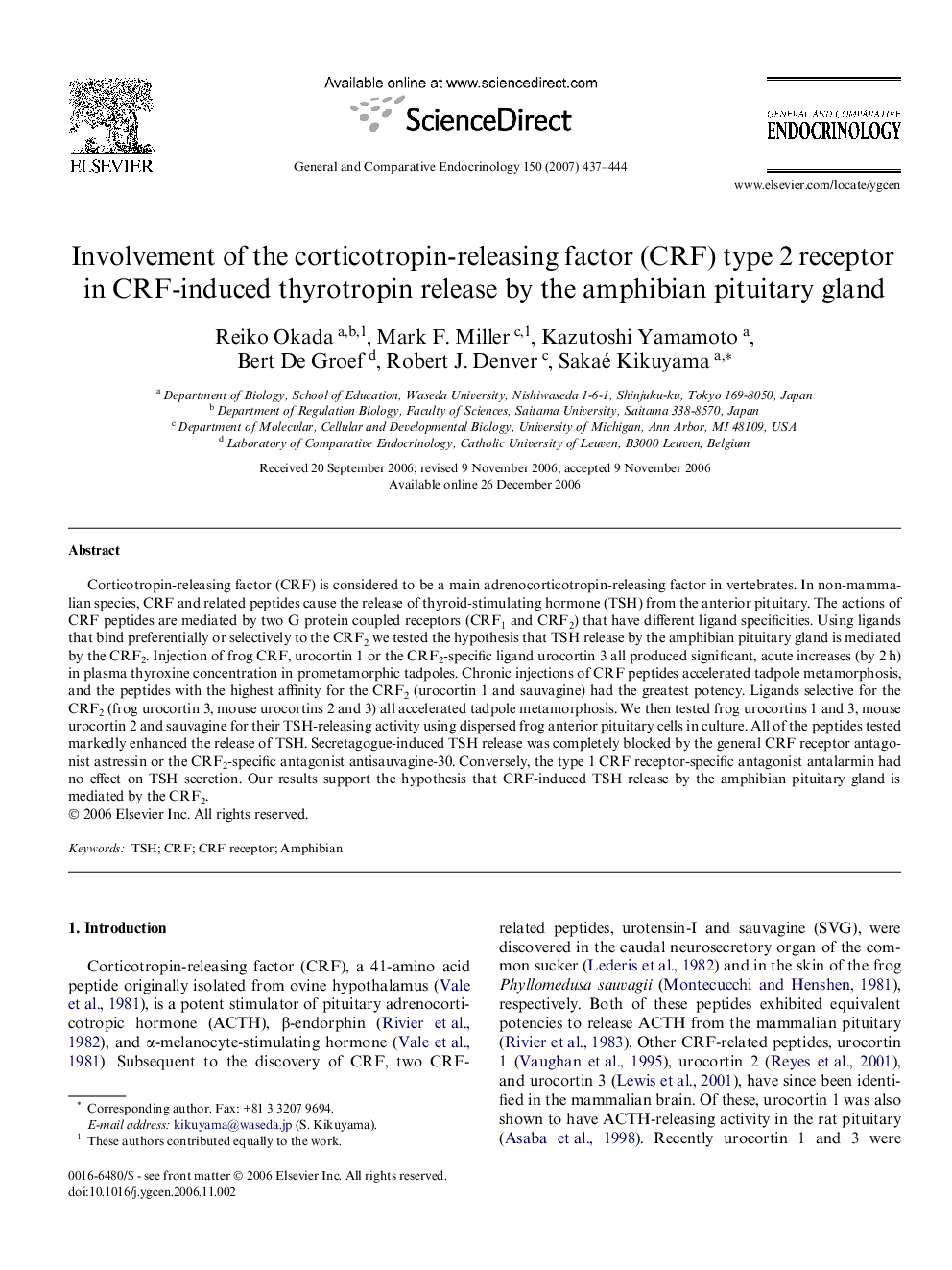| کد مقاله | کد نشریه | سال انتشار | مقاله انگلیسی | نسخه تمام متن |
|---|---|---|---|---|
| 2802086 | 1568934 | 2007 | 8 صفحه PDF | دانلود رایگان |

Corticotropin-releasing factor (CRF) is considered to be a main adrenocorticotropin-releasing factor in vertebrates. In non-mammalian species, CRF and related peptides cause the release of thyroid-stimulating hormone (TSH) from the anterior pituitary. The actions of CRF peptides are mediated by two G protein coupled receptors (CRF1 and CRF2) that have different ligand specificities. Using ligands that bind preferentially or selectively to the CRF2 we tested the hypothesis that TSH release by the amphibian pituitary gland is mediated by the CRF2. Injection of frog CRF, urocortin 1 or the CRF2-specific ligand urocortin 3 all produced significant, acute increases (by 2 h) in plasma thyroxine concentration in prometamorphic tadpoles. Chronic injections of CRF peptides accelerated tadpole metamorphosis, and the peptides with the highest affinity for the CRF2 (urocortin 1 and sauvagine) had the greatest potency. Ligands selective for the CRF2 (frog urocortin 3, mouse urocortins 2 and 3) all accelerated tadpole metamorphosis. We then tested frog urocortins 1 and 3, mouse urocortin 2 and sauvagine for their TSH-releasing activity using dispersed frog anterior pituitary cells in culture. All of the peptides tested markedly enhanced the release of TSH. Secretagogue-induced TSH release was completely blocked by the general CRF receptor antagonist astressin or the CRF2-specific antagonist antisauvagine-30. Conversely, the type 1 CRF receptor-specific antagonist antalarmin had no effect on TSH secretion. Our results support the hypothesis that CRF-induced TSH release by the amphibian pituitary gland is mediated by the CRF2.
Journal: General and Comparative Endocrinology - Volume 150, Issue 3, February 2007, Pages 437–444